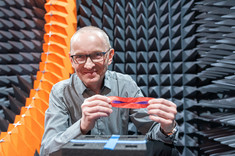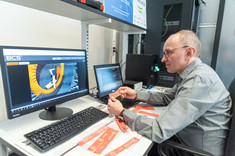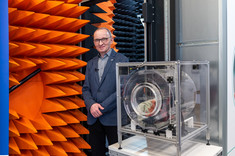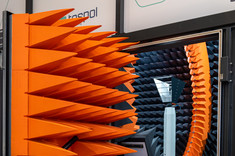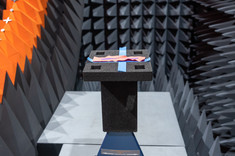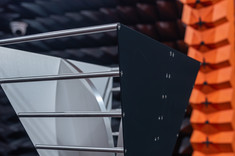Textronic RFID transponder
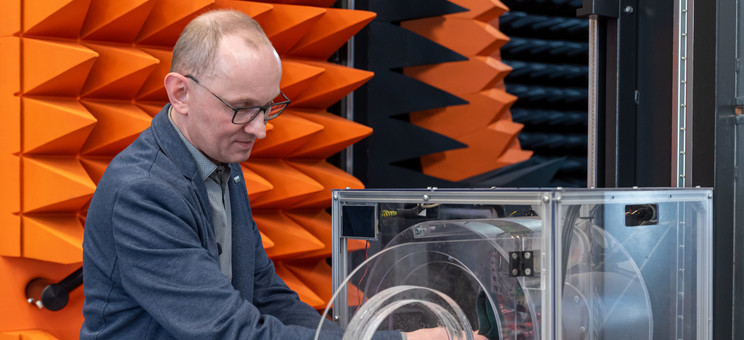
A team of employees from the Department of Electronics and Telecommunication Systems at the Faculty of Electrical Engineering and Computer Science under the supervision of Piotr Jankowski-Mihułowicz, PhD, DSc, Eng., Associate Prof., participates in an innovative project related to the development and launch of an autonomous store of Esotiq&Henderson company. The basis for the implementation of industrial research and development works of this project was to grant the Company by Rzeszow University of Technology non-exclusive license for the patent "Textronic RFID transponder".
The patent "Textronic RFID transponder" answers the needs of the clothing industry, and the microelectronic chip of this transponder could be hidden, for example, in a button or a decorative element sewn into a garment.
The textronic RFID transponder is mechanically connected to the textile material and equipped with an antenna and a chip. It also includes an antenna module and a microelectronic module that are galvanically separated from each other. The antenna module includes an antenna galvanically connected to the antenna coupling circuit, and the microelectronic module includes a chip galvanically connected to the microelectronic coupling circuit. The antenna coupling circuit and the microelectronic coupling circuit are magnetically coupled. The antenna module is embroidered with conductive threads on the textile material or is pressed into the textile material or is sewn to it.
We have already become accustomed to living with RFID technology, e.g. using contactless payments for daily shopping, ski-passes on the ski slopes, access control or documents with an electronic layer such as ID cards and biometric passports. The unique solution of the mentioned industrial research, which is carried out for the company Esotiq&Henderson by a team of employees from the Department of Electronic and Telecommunication Systems, is the production of an electronic radio frequency transponder and its integration with textile products by means of commonly used sewing methods.
Thanks to these methods the badge's antenna is sewn/embroidered with conductive thread and its microelectronic circuit can be hidden in a button, bead or decorative element which will be simply sewn to the garment. This results in the creation of electronic transponders for textiles already at the manufacturing stage, which can be used at every stage of the life cycle of these products.
Such information can be used first in the internal logistic processes of the company, then in the distribution of products, trade, and in the near future (if innovative washing machines, irons are created) in their exploitation, and finally in the process of disposal. It should be remembered that textiles are products that will be subject to recycling processes.
An interesting example of this not-too-distant future is the results of research work related to textronics in the area of Radio Frequency IDentification technology, which was published on April 4, 2022 in the "Energies" journal. The paper presents a unique washing machine demonstrator in which, in the future, it will be possible to do laundry in a completely automatic way, without thinking about how to set the programmer to wash the things in the drum safely for the fabrics. In a similar way, the authors are developing another household appliance – a steam station, with the help of which we can safely wash clothes, avoiding accidental damage (e.g. burning).
In this way, the Internet of Textile Things (IoTT) mentioned in the patent will come into being, which, according to the authors, will on the one hand improve many business processes and on the other hand – make everyday life easier.




